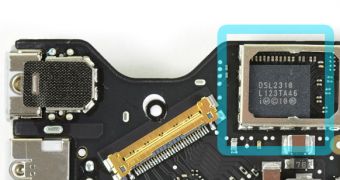Intel has recently notified its hardware partners that the company will “fully release” its 10Gbps Thunderbolt technology in April of 2012, several PC players already preparing to launch motherboards, notebooks and desktop systems supporting this interconnect.
The date announced by Intel seems to match closely with the release of the Ivy Bridge processor series, which seems to indicate that Thunderbolt will be a common sight in desktop and mobile computers powered by these CPUs.
According to sources cited by DigiTimes, Asus and Sony will be some of the most important players to incorporate this technology into their high-end notebook products, while Gigabyte is also said to have plans to introduce Thunderbolt into their motherboards.
Due to the high costs of the Thunderbolt technology (more than $20 US per chip) its adoption has been limited so far, Apple being the most important computer maker to include it into its products.
This list includes systems from the MacBook Pro, iMac, MacBook Air and MacBook Mini lines, as well as a 27-inch computer monitor.
The Thunderbolt technology was developed in order to provide a unified interface with enough bandwidth to replace all the current connection buses, such as SCSI, SATA, USB, FireWire or PCI Express.
Although this first iteration of Thunderbolt is far away from reaching that goal, it still manages to join together the PCI Express and the DisplayPort interfaces and can provide, in theory, 20Gbps of upstream and 20Gbps of downstream bandwidth (via two 10Gbps bidirectional channels).
Thunderbolt can also daisy chain up to 7 devices and delivers a maximum of 10W of power without requiring any additional connectors.
The interface shares connectors and cabling with mini-DisplayPort and Intel promises these will remain unchanged when the technology switches from electrical to optical cables.

 14 DAY TRIAL //
14 DAY TRIAL //